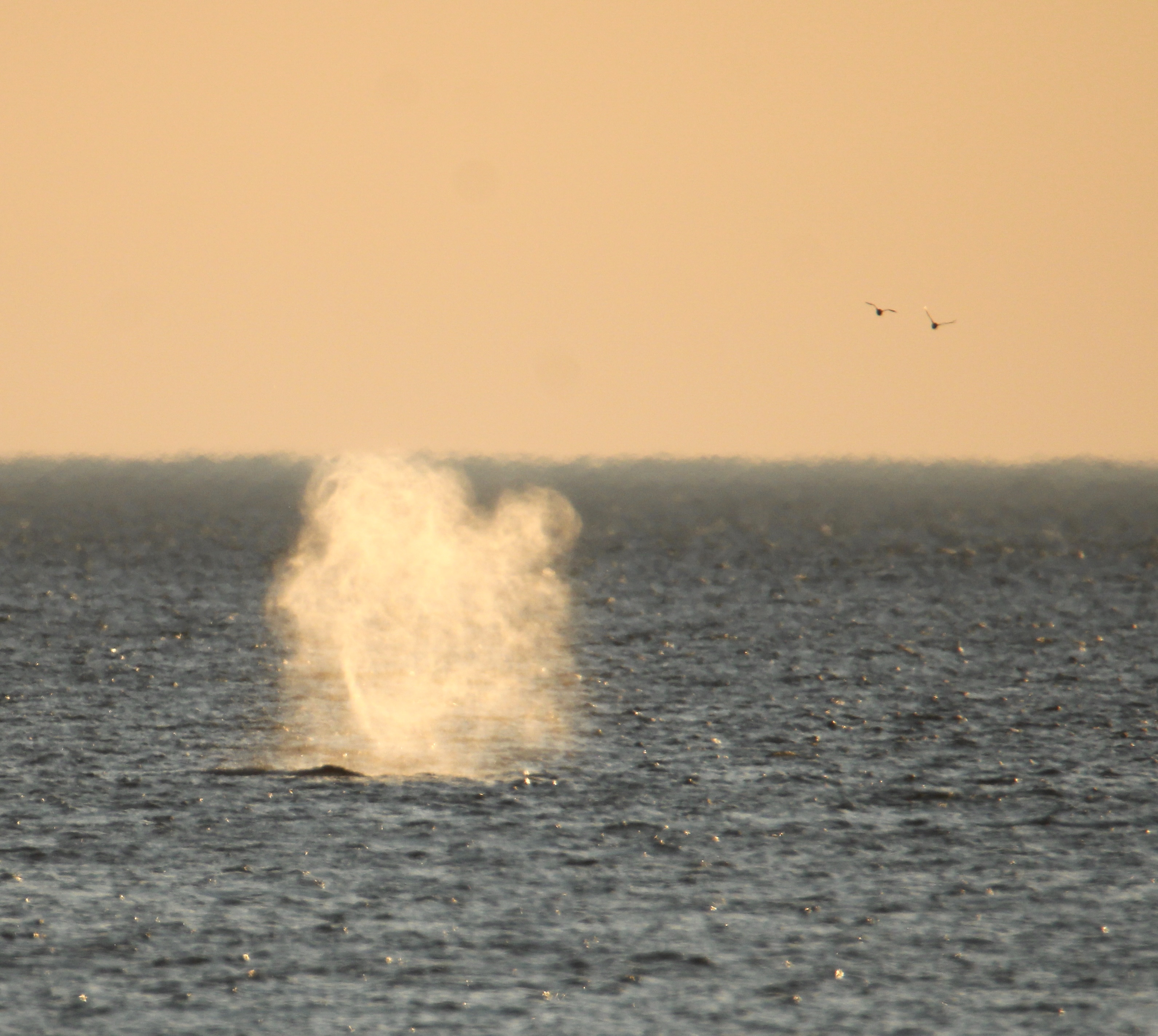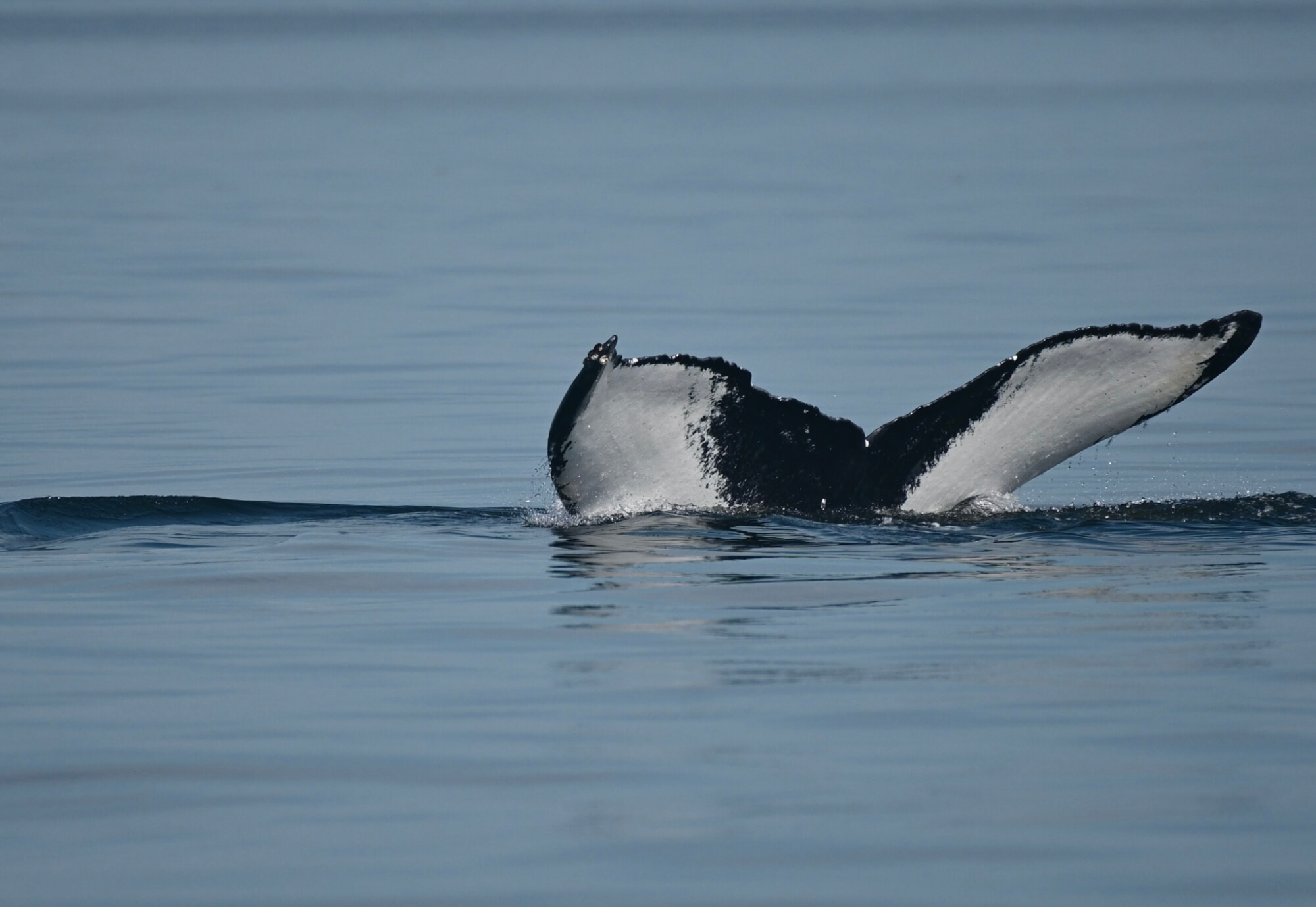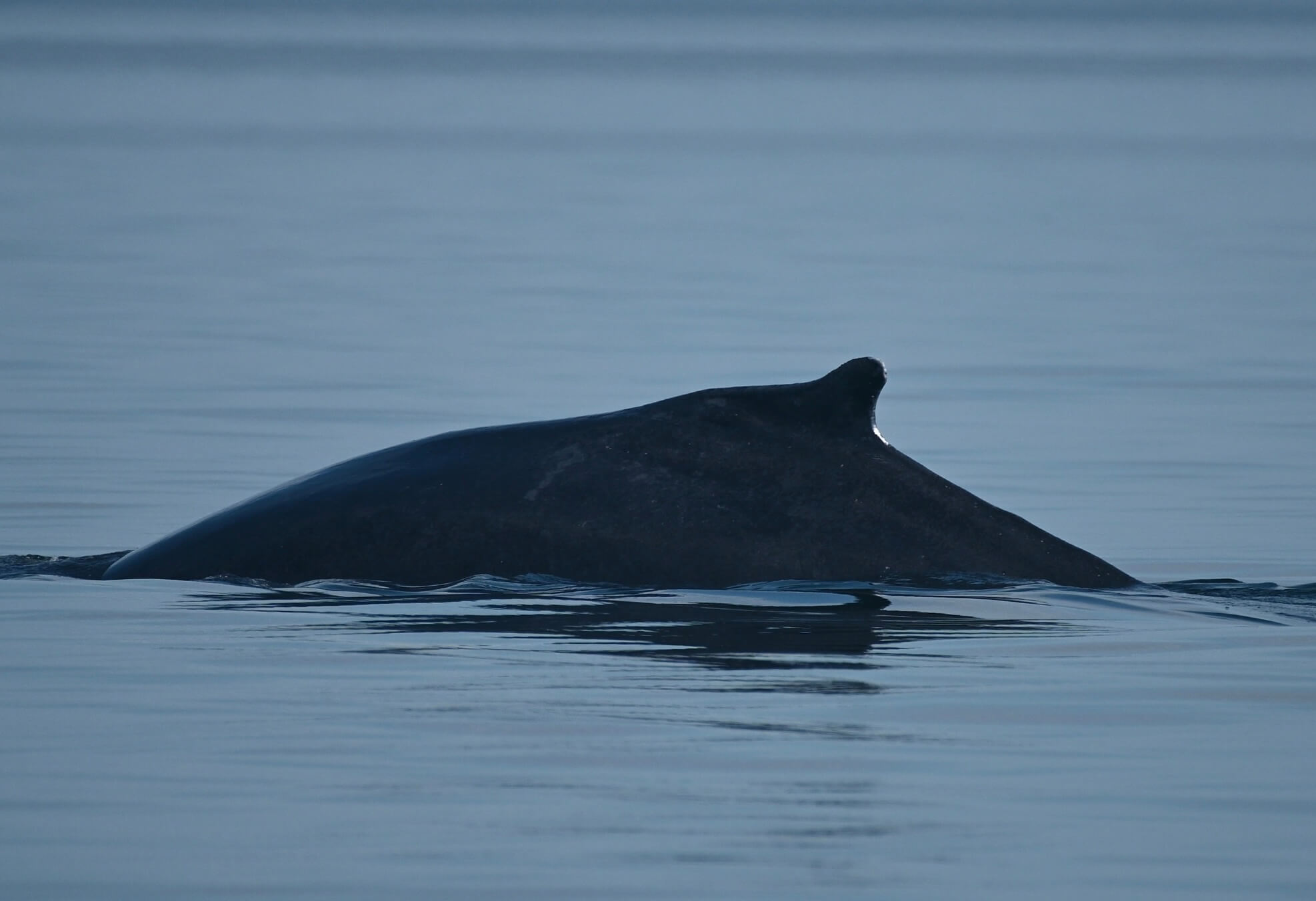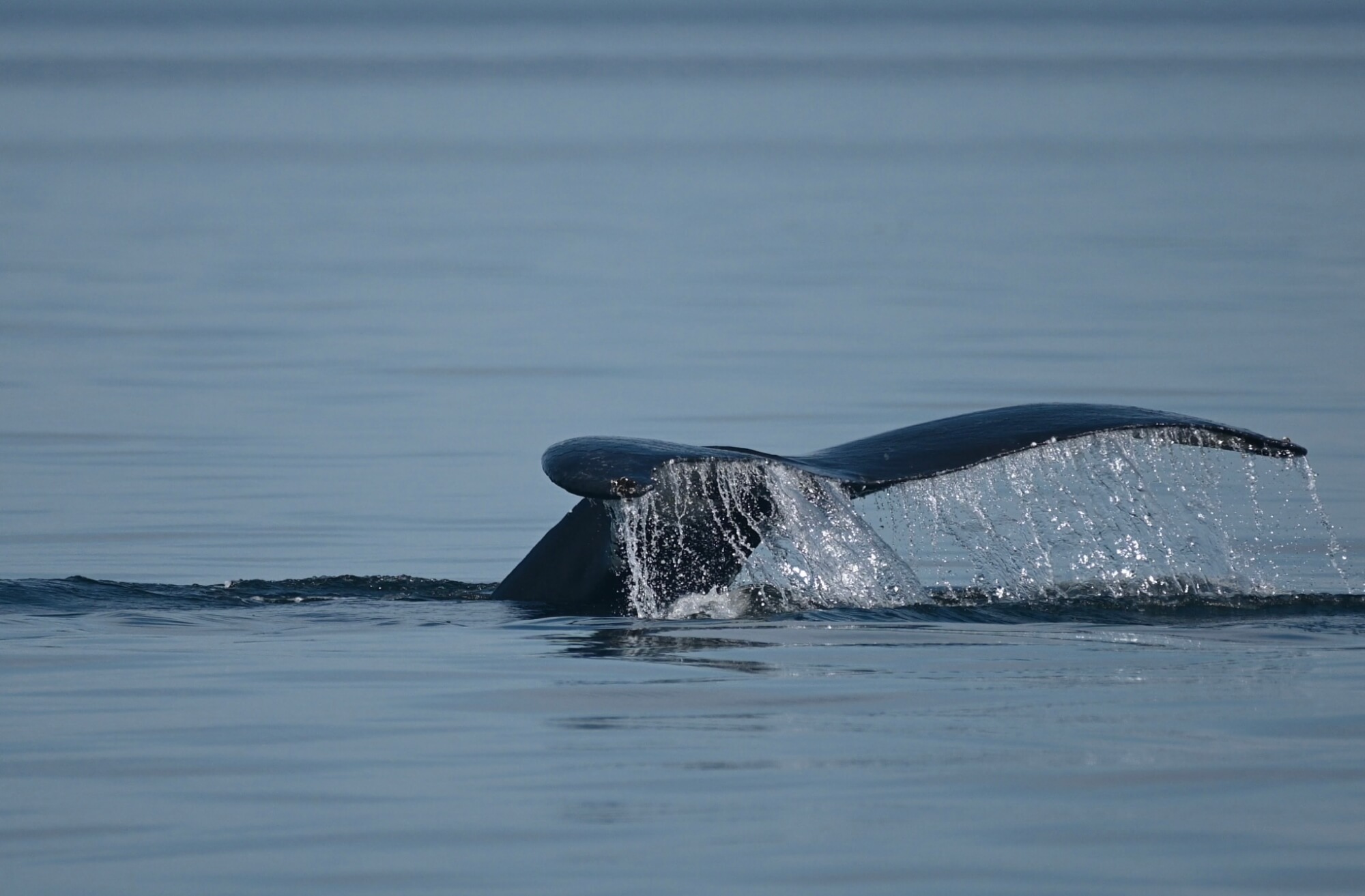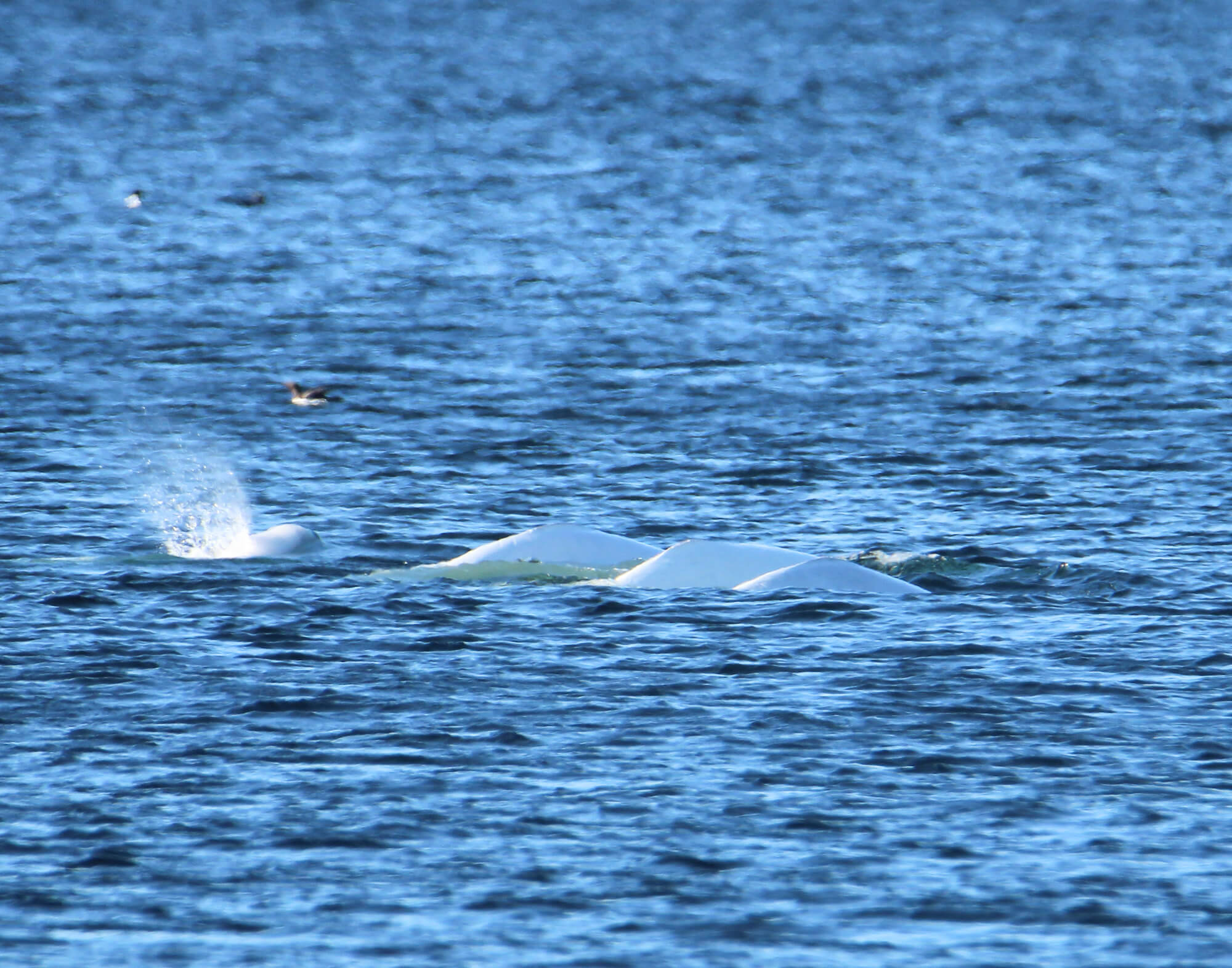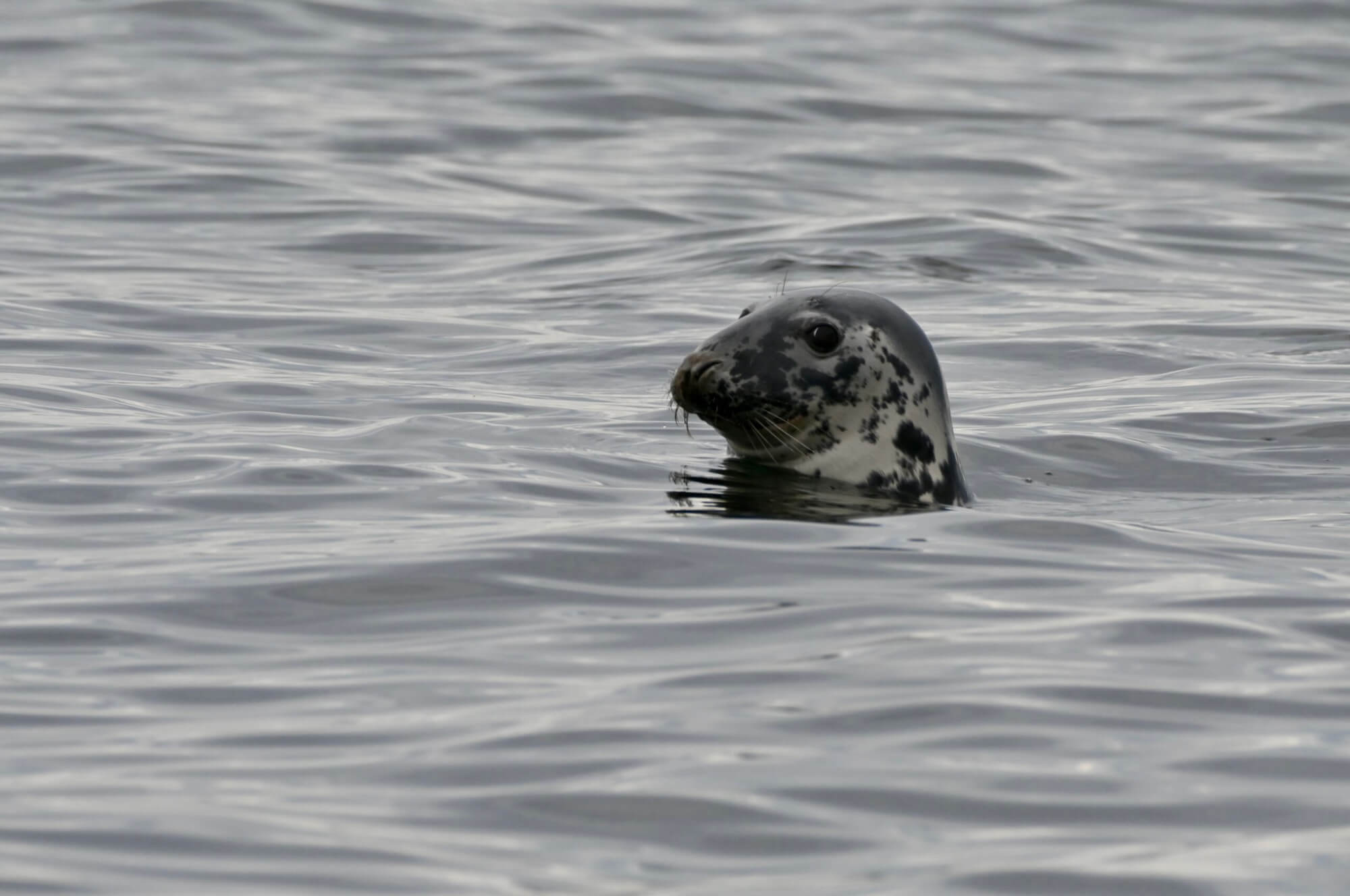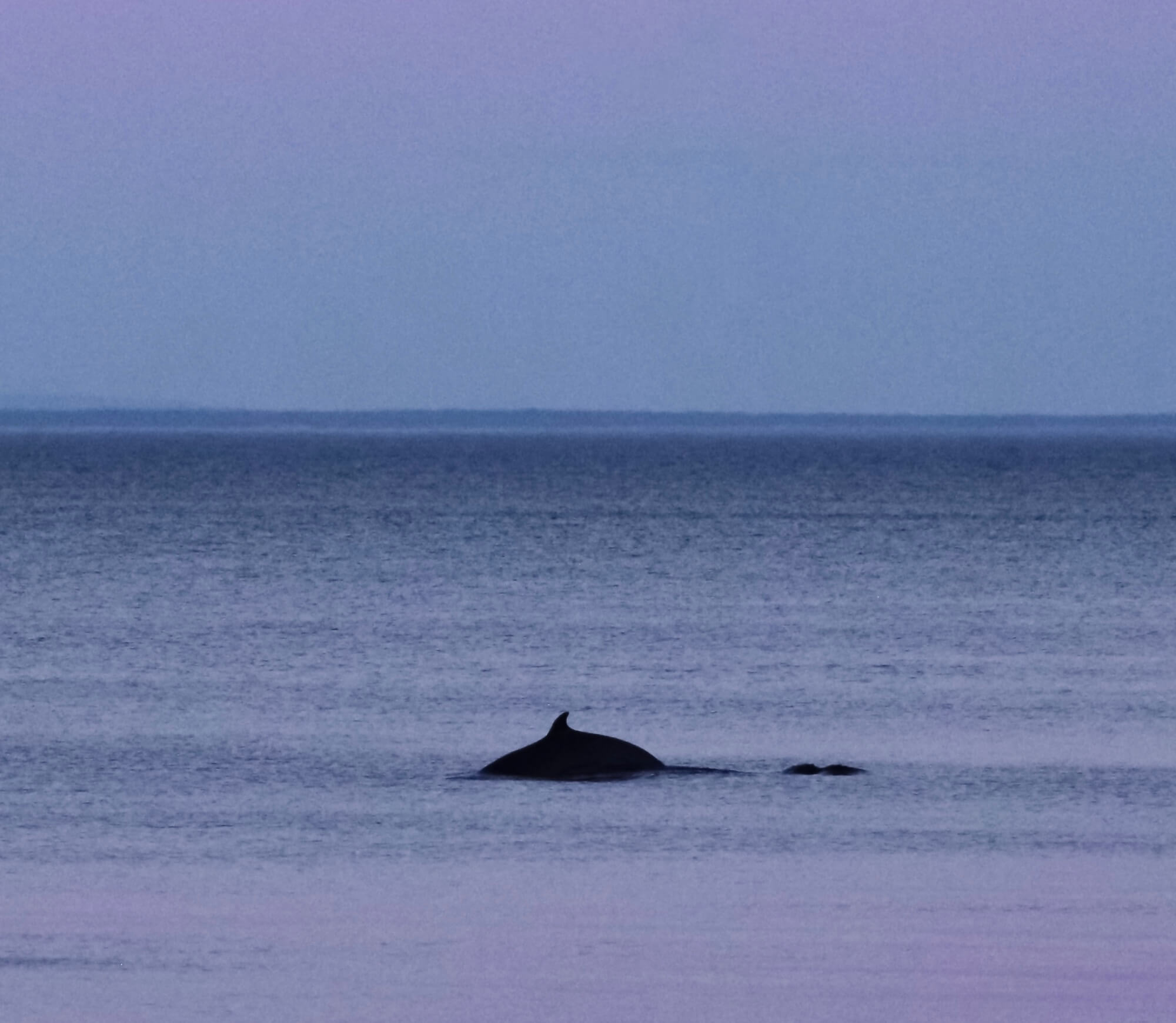Siam, the estuary’s oldest humpback whale, is back! Whales were swimming just about everywhere in the St. Lawrence, including good numbers of minke whales and belugas, as well as six fin whales in the Mingan Islands. In Gaspésie, it’s a completely different species that stole the spotlight: a basking shark!
Siam’s return
This humpback was first photographed in the estuary in 1981. At the time, it was the only humpback to venture into these waters that are a feeding ground more heavily frequented by fin and blue whales. For captains and naturalists who have known Siam for years, observing this mythical individual can be moving: “What a relief to see Siam again right at the start of the season. Every year, we look forward to seeing him again the following feeding season […]!”
Like many humpbacks, Siam owes his name to the unique colour pattern of the underside of his tail. Indeed, the cat eyes that stand out in the black part of its tail evoke the head of a feline. Hence its name, which is a shortening of the word “Siamese.”
Meanwhile, in the Saguenay-St. Lawrence Marine Park
Belugas have been venturing into Tadoussac Bay on a few occasions. In Baie Sainte-Marguerite, over 40 of these white whales were seen from shore, including adults, grey individuals and calves! The numerous observations of this species at this location are testimony to how important this inlet is.
A gathering of grey seals – an often solitary species – represented a somewhat surprising and unusual observation. “There were several minke whales,” comments a naturalist speaking about the week’s list of sightings, “but they were not easy to observe at times. I’ve often joked that they are like little magicians in that they are very adept at disappearing from your field of view.”
From Cap de Bon-Désir, a marine mammal enthusiast enjoys his first sighting of the year of harbour porpoises! “The water was super calm, so you could easily hear their little breaths.” The action peaked with the presence of a few minke whales, belugas and harbour seals. Seabirds further added to the beauty of the maritime landscape. “A gull dropped a sea urchin onto the rocks several times to try to make it easier to swallow.” Gotta be resourceful!
In terms of humpbacks, there’s more than just Siam! Gaspar and Irisept have also been swimming in the Marine Park, much to the delight of observers. Perhaps it was one of them that friends posted at the ferry dock in Les Escoumins saw heading east?
Basking shark in Gaspé
In Gaspésie, it’s the second largest fish in the world that has people talking: a basking shark! After several reports from a resident who had been filming from a distance what strongly appeared to be an individual of this species for a week, it was ultimately at Forillon Park that the presence of a basking shark in the area was confirmed. On its Facebook page, the park team reports the observation: “Using a scientific drone, our conservation team was cataloguing alpine arctic plants in the cliffs of the southern sector. Out of the corner of his eye, our geomatics technician spotted a good-sized triangle cutting across the water surface. It was the fin of a basking shark!”
This harmless fish feeds by skimming the water surface. The species has hair-like structures associated with the gills called gill rakers that it uses to filter plankton. In fact, they’re sort of like the baleen in whales!
Increasing numbers of harbour and grey seals are being reported in Gaspé Bay. Two humpback whales bring smiles to observers’ faces, as do the harbour porpoises seen throughout the week. Near Grande-Vallée, a minke whale came to feast while belugas passed by on a few occasions.
Along the coast
The tail of a humpback whale was spotted by boaters near Cap-à-l’Aigle. Unfortunately, we have no photo to help us identify the individual! In Saint-Siméon, the white backs of belugas are spotted on multiple occasions meandering along the coast. For one resident, the week also marks the return of one particular species to the area: “Minke whales seem to be back in good numbers off the coast of Saint-Siméon, with several sightings every morning.”
Much farther east, from the Pointe-des-Monts lighthouse, white whales are spotted on an almost daily basis. On Wednesday, eight individuals even passed in front of the historic monument! In the same area, locals have been observing minke whales during the day, then falling asleep at night to the soothing sound of large whales blowing in the distance. The echo also allowed them to distinguish the hum of boats passing 5 or 6 kilometres offshore.
In the silence, boaters passing through the islands of the Mingan Archipelago are able to make out the breaths of a minke whale. Grey seals and harbour porpoises are also present. The Mingan Island Cetacean Study has its work cut out: after seeing a humpback whale on June 27, the team must now identify the six fin whales they photographed on July 1!
Where are the whales this week? Observation map
These data were reported by our network of observers. The observations give a rough idea of the presence of whales, but do not in any way represent the true distribution of cetaceans in the St. Lawrence. Enjoy!
Click on the whale or seal icons to see the species, number of individuals observed, additional information or photos of the sighting. To zoom in on the map, click on the icon in the upper right corner. The map works well on Chrome and Firefox, but less so on Safari.
To display the list of observations, click on the icon in the upper left corner.
Thanks to all our collaborators!
Special thanks go out to all our observers who share their love for marine mammals with us! Your encounters with cetaceans and pinnipeds are always a pleasure to read and discover.
On the water or from shore, it is your eyes that give life to this column.
André Bujold
Odélie Brouillette
Guylaine Côté
Marie-Andrée Charleboix
Michel Comeau
Clara Comeau
Thalia Cohen-Bacry
Marcel Cousineau
Laetitia Desbordes
Julie Deschênes
Pierre-Soleil Dion
Louis-Pierre Ducharme
Jade-Audrey Lavergne
Kevin Maltese-Crottier
Yael Medav
Élizabeth Melis
Camille Nem
Diane Ostiguy
Estelle Pagé
Chloé Pazart
Renaud Pintiaux
Pascal Pitre
Aline Remus
Jean Roy
Marie-Josée Roy
René Roy
Guillaume Savard
Andréanne Sylvain
Véronique Tanguay
Marielle Vanasse
And all those we left out!
Additionally, we would like to acknowledge the following teams that also share their sightings:
Sept-Îles Research and Education Centre (CERSI)
Group for Research and Education on Marine Mammals (GREMM)
Marine Mammal Observation Network (MMON)
Quebec Marine Mammal Emergency Response Network (QMMERN)
Mingan Island Cetacean Study (MICS)
Would you also like to share your observations?
Have you seen any marine mammals in the St. Lawrence? Whether it’s a spout offshore or just a couple of seals, drop us a line and send your photos to [email protected]!


